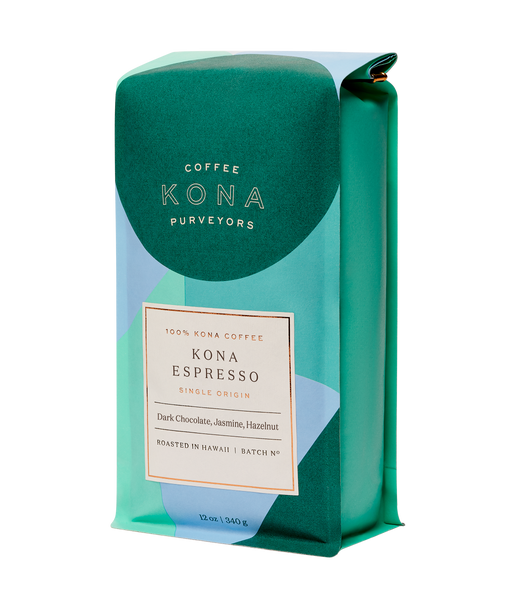A Guide Before Buying SOE Single Origin Espresso
A Guide Before Buying SOE Single Origin Espresso
Blog Article
Recognizing Coffee Beans: the Journey From Coffee to Blended Coffee Beans

The Beginnings of Coffee: A Worldwide Point Of View
While you could think of coffee as a modern staple, its origins trace back centuries, linking with societies throughout the world. The tale starts in Ethiopia, where legend states a goat herdsman named Kaldi uncovered the energizing impacts of coffee beans after discovering his goats frolicking vigorously after eating them.
As trade routes broadened, coffee made its way to Europe in the 17th century, quickly getting popularity. It transformed from a mystical beverage into a daily routine, inspiring celebrations and intellectual exchanges. Each culture added its special spin to coffee prep work, enriching its history. This global journey highlights exactly how coffee attaches us, transcending boundaries and unifying diverse customs via a basic bean.
Cultivation and Harvesting of Espresso Beans
As coffee's journey progressed, the emphasis shifted to the cultivation and harvesting of certain bean varieties, especially those utilized for espresso. You'll discover that espresso beans typically originate from Arabica or Robusta plants, each offering unique flavors. The suitable expanding conditions include high altitudes and abundant, well-drained soil, which boost the beans' top quality.
During the harvest, choosing approaches differ. Timing is crucial; you want to harvest when the cherries reach peak ripeness for maximum taste.
As soon as gathered, the beans are gotten ready for processing, which is vital in determining their last preference. Recognizing the cultivation and collecting procedures provides you understanding into what enters into your favorite coffee, enriching your gratitude for each cup.
Processing Techniques: From Cherry to Bean
Currently that you've learnt more about gathering coffee beans, let's discover just how those cherries change into the coffee beans you love. You'll see just how various harvesting techniques impact taste, followed by the vital actions of fermentation and drying. We'll damage down the milling and grading procedure that establishes your coffee's high quality.
Collecting Strategies Described
When it comes to coffee, comprehending harvesting strategies is important, since they straight impact the flavor and top quality of the beans you enjoy. There are two key approaches: careful selecting and strip picking. Careful picking includes hand-picking only ripe cherries, ensuring you obtain the ideal quality beans. This method often leads to a richer flavor account, though it's more labor-intensive. On the other hand, strip selecting methods collecting all cherries at the same time, despite perfection. While it's quicker and less costly, this can cause a mix of tastes, impacting the end product. Ultimately, the choice of harvesting strategy can greatly influence your coffee experience, so it deserves recognizing just how those beans made it to your mug.
Fermentation and Drying
After collecting, the next action in processing coffee beans play a significant role fit their taste. You'll find that fermentation is important, as it helps damage down the mucilage surrounding the beans, boosting their taste profile. Depending upon the technique, this procedure can last from a few hours to a number of days, with differing outcomes based upon temperature and humidity.
As soon as fermentation is total, drying out complies with, which is just as crucial. You can select from mechanical or sun-drying drying out techniques. Sun-drying permits the beans to take in tastes from the setting, while mechanical drying warranties constant moisture degrees no matter weather. Correct drying is important to prevent mold and protect the beans' quality, ultimately affecting your cup of coffee.
Milling and Grading Refine
As fermentation and drying out established the stage for taste growth, the milling and grading procedure guarantees that only the finest coffee beans make it to your cup. This phase includes removing the outer layers of the coffee cherry, consisting of the parchment and husk. Top quality beans obtain a higher grade, resulting in a richer coffee experience.
Roasting Techniques: Opening Taste Potential
When you roast coffee beans, the technique you choose can significantly influence the taste account. Recognizing the relationship between time, temperature, and roasting methods is essential to disclosing the possibility of your brew. Allow's explore how these elements collaborated to develop the perfect mug.
Roasting Methods Explained
While you may think that all coffee roasting approaches produce the same results, the fact is that each method reveals special flavor potentials in the beans. Drum toasting uses a revolving drum to evenly distribute warm, boosting caramelization and producing a balanced taste. Air roasting, on the various other hand, flows hot air around the beans, advertising a lighter roast with obvious level of acidity.

Impact on Taste Account
Different toasting methods not just influence the process yet likewise significantly influence the flavor account of the coffee beans. When you select a light roast, you'll experience intense level of acidity and flower notes, showcasing the bean's origin. In contrast, a medium roast equilibriums level of acidity with sweetness, typically revealing chocolatey undertones. Dark roasts, on see this here the various other hand, bring out bold, smoky tastes, in some cases concealing the bean's one-of-a-kind characteristics. Each method discloses various oils and compounds, causing a large range of flavors. By try out various toasting designs, you can uncover which accounts resonate with your palate. Understanding these subtleties helps you value the artistry behind your cup of coffee, enhancing your overall experience with every sip.
Time and Temperature Elements
To launch the full taste possibility of coffee beans, both time and temperature throughout the toasting process play significant functions. When roasting, you'll find that higher temperature levels can swiftly establish flavors, but if you rush it, you might wind up with burned notes. Alternatively, reduced temperature levels permit a more progressive taste growth, showcasing the beans' unique characteristics.

Timing is equally as essential; extending the roast too long can lead to a loss of level of acidity and illumination, while too short a roast may leave the beans underdeveloped. Locating that sweet area requires method and experimentation. By adjusting these aspects, you can expose the abundant, intricate flavors concealed within each bean, developing a truly exceptional coffee experience.
The Art of Mixing: Crafting Unique Coffee Profiles

Begin by choosing a base coffee that gives a strong structure. A bright Ethiopian bean can bring fruitiness, while a rich Brazilian coffee adds body.
As you blend, maintain in mind that each mix narrates. You're not just making coffee; you're developing an webpage experience. Take your time, preference frequently, and take pleasure in the journey of finding your trademark blend - Single Origin Espresso.
Developing Approaches: Exactly How Preparation Impacts Taste
Mixing coffee opens up a domain of taste possibilities, but just how you brew that mix can significantly affect your last cup. On the various other hand, a pour-over highlights the coffee's clearness and brightness, best for showcasing delicate notes.
Coffee, with its high pressure, produces a focused shot that highlights sweetness and crema. If you favor a lighter brew, consider a chilly brew approach; it generates a smooth, less acidic taste.
Readjusting variables like water temperature, grind dimension, and brew time can change your coffee's profile. Embrace the art of developing to find the tastes concealed in your coffee blends.
The Future of Coffee: Sustainability and Advancement
As the coffee market progresses, sustainability and advancement are becoming essential for addressing environmental challenges and conference customer demands. You'll see that even more coffee companies are adopting environment-friendly methods, from sourcing beans ethically to carrying out sustainable farming techniques. These changes not just aid the planet however also enhance the high quality of the coffee you delight in.
You may see innovations like biodegradable product packaging and water-saving developing approaches that lower waste. Advanced technology, such as blockchain, is also ending up being preferred, making certain openness in the supply chain, which permits you to trace your coffee back to its origins.
Additionally, purchasing neighborhood neighborhoods and sustaining farmers through reasonable trade efforts fosters a more sustainable coffee environment. As you sip your next mug, bear in mind that your choices can contribute to a brighter future for coffee. By selecting sustainable brands, you're not simply enjoying a beverage; you're making a favorable influence on the globe.
Regularly Asked Inquiries
What Is the Difference In Between Arabica and Robusta Beans?
Arabica beans are smoother, sweeter, and have a greater level of acidity, while robusta beans are stronger, more bitter, and contain even more caffeine. When brewing your coffee., you'll observe these differences in flavor and aroma.
Just How Does Elevation Affect Coffee Bean Taste?
Elevation effects coffee bean flavor significantly. Higher altitudes produce beans with brighter acidity and complex flavors, while reduced altitudes frequently yield beans that are larger and less nuanced. You'll notice these distinctions in your cup!
What Are the Health Conveniences of Alcohol Consumption Coffee?
Consuming coffee can boost your power, enhance psychological emphasis, and even enhance physical efficiency. It's rich in anti-oxidants, may reduce the threat of specific diseases, and can advertise a much healthier metabolic process when eaten in small amounts.
Can Coffee Beans Be Reused for Developing?
Yes, you can recycle coffee beans for brewing, but the taste may be weak. If you take pleasure in exploring, try recycling them in different ways, like cool mixtures or including in shakes for an added kick.
How Should I Shop Coffee Beans for Quality?
To maintain your coffee beans fresh, keep them in an impermeable container in an awesome, dark area. Prevent exposing them to dampness, warmth, or light, as these aspects can rapidly weaken their flavor and fragrance.
Comprehending Coffee Beans: the Journey From Espresso to Blended Coffee Beans.
Currently that you have actually found out regarding gathering coffee beans, let's check out how those cherries change into the coffee beans you enjoy.When you roast coffee beans, the technique you pick can substantially impact the taste look at this now account - Single Origin Espresso.While you may believe that all coffee toasting techniques yield the very same results, the truth is that each method discloses distinct taste capacities in the beans.Different roasting approaches not just affect the process but additionally substantially impact the flavor profile of the coffee beans
Report this page